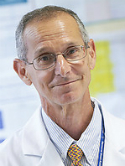| Abstract: |
Adenocarcinoma of the esophagus is rapidly increasing in incidence in the Western world. In both North America and Western Europe, a marked shift in the epidemiologic profile of this disease has occurred. In the past, the vast majority of patients with esophageal cancer were found to have epidermoid carcinoma. These patients frequently abused tobacco or alcohol, had multiple comorbid medical conditions, and were often elderly. Over the last 10 to 15 years, a rapid increase in the number of patients having adenocarcinoma of the esophagus has been noted. In contrast to those with epidermoid carcinoma, these patients are predominantly young white men between the ages of 35 and 55 who much less frequently smoke or drink. Many have few or no comorbid medical conditions, are quite fit, and are able to tolerate aggressive combined modality therapy. This article focuses on the adenocarcinoma subgroup of patients, although identical therapeutic approaches are being studied in appropriate patients with epidermoid carcinomas. |



